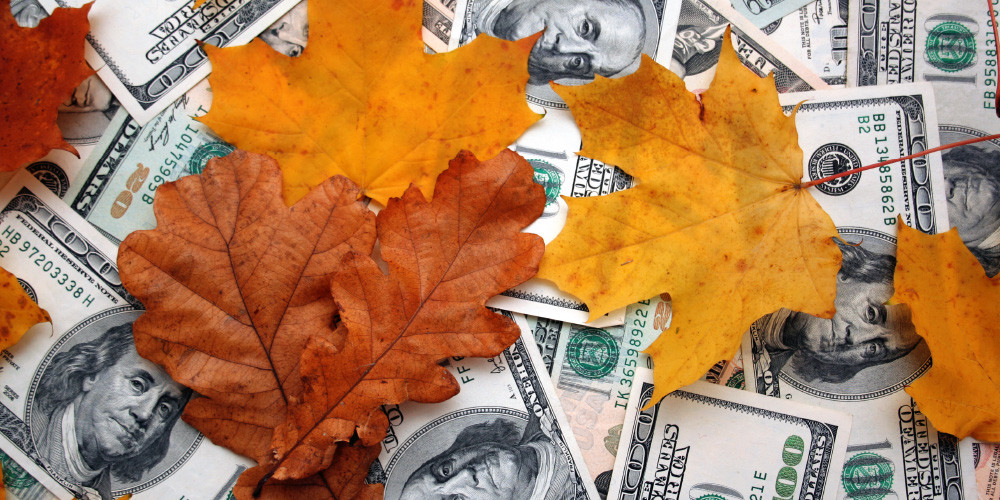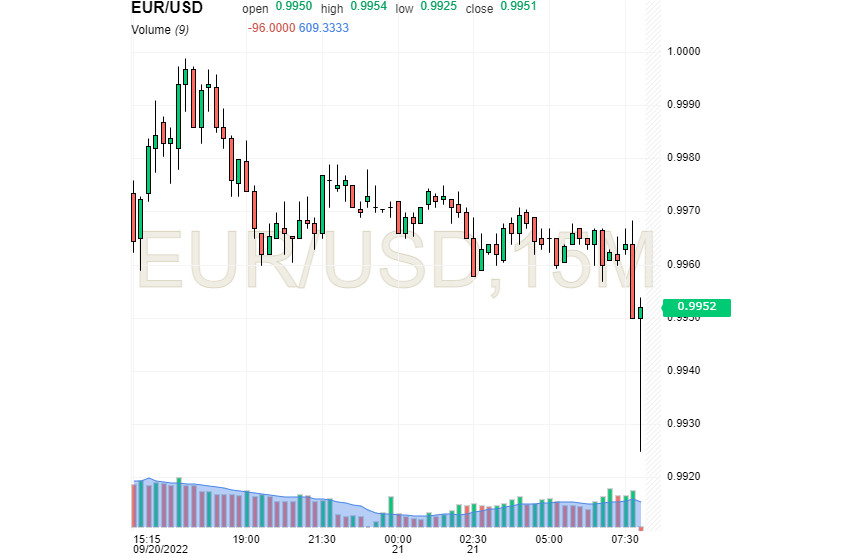
The US currency is still holding steady, gaining momentum before the Federal Reserve meeting, which cannot be said about the European one. The latter tries to gain a foothold in the positions won, but these efforts often do not meet expectations.
Constantly rising inflation and unstable geopolitical background keep market participants and world central banks in suspense. Recently, many of them expected the Fed to raise interest rates by 50-75 bps at the next meeting. However, now the situation has worsened, so traders and investors expect the rate to rise by 75 bps and higher, that is, by 100 bps.
Market participants expect that the Fed will announce its final decision on the rate on Wednesday, September 21. According to preliminary estimates, it is expected to increase by 75 bps, up to 3-3.25% per annum. At the same time, the central bank will present macroeconomic forecasts, followed by a press conference by Fed Chairman Jerome Powell. Against this background, the markets are in suspense about the Fed's future strategy.
According to analysts, the central bank will continue to raise interest rates until it gets inflation under control. At the moment, futures show the probability of a rate hike above 4% by the end of 2022, which implies a further increase at two meetings of the Federal Open Market Committee (FOMC), which are scheduled for early November and mid-December.
Against this background, the pressure on the euro is increasing and the dollar's appeal as a protective asset is growing. On the morning of Wednesday, September 21, the greenback remained near a two-decade high against most currencies, primarily the euro. At the same time, the EUR/USD pair was trading at 0.9952, almost without going beyond the current range. According to analysts, the Fed's interest rate decision will set the tone in the financial markets for the coming months.

At the moment, the topic of quantitative tightening remains in the focus of the markets' attention. Central banks are withdrawing liquidity from the financial system and reinvesting less and less of the income received from the repayment of state bonds. It should be noted that the Fed, whose balance sheet reaches $9 trillion, has reduced the volume of reinvestments by $47.5 billion per month, starting in June 2022. According to preliminary calculations, by the end of September, this figure will increase to $95 billion.
Market participants expect the European Central Bank to take similar actions, that is, to reduce its balance sheet, which is 8 trillion euros. However, in this matter, the ECB also falls behind the American one. According to ECB President Christine Lagarde, at the moment the introduction of quantitative tightening is impractical. However, despite such statements, the central bank is expected to consider this issue at the next meeting, which is scheduled for October.
Against this background, the euro has lost part of its gains. Unlike the greenback, it is difficult for the single currency to gain a foothold in the current positions. As a result, the euro is constantly slipping into a downward spiral. The situation was not changed even by decisive measures on the part of the ECB, which sharply raised rates (by 50 bps and 75 bps) at the last two meetings. Thanks to these steps, high inflation does not put too much pressure on the euro, analysts believe.
However, the US central bank began to raise interest rates earlier than the European one, having gained a head start in this matter. Currently, the Fed is raising interest rates more aggressively than other central banks. As a result, a sharp increase in Fed rates contributed to a significant strengthening of the greenback, which continues to grow. At the same time, the rise in the price of USD exacerbates inflation in other countries, since the lion's share of international settlements is made in the US currency. In the event of a fall in other currencies against the greenback, imports in most countries sink, as goods denominated in dollars become more expensive.
The noticeable strengthening of the US currency worsens the prospects for the global economy, experts emphasize. First of all, developing countries suffer from this, whose economic growth opportunities are severely limited. In addition, the strong USD and the global economic downturn have a negative impact on the income of American companies abroad. The further expansion of the global crisis is pushing the authorities of a number of countries to introduce measures to curb the dominance of the USD, experts summarize.
 English
English 
 Русский
Русский Bahasa Indonesia
Bahasa Indonesia Bahasa Malay
Bahasa Malay ไทย
ไทย Español
Español Deutsch
Deutsch Български
Български Français
Français Tiếng Việt
Tiếng Việt 中文
中文 বাংলা
বাংলা हिन्दी
हिन्दी Čeština
Čeština Українська
Українська Română
Română

